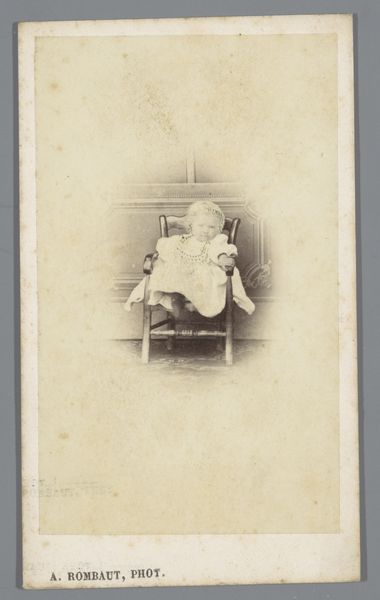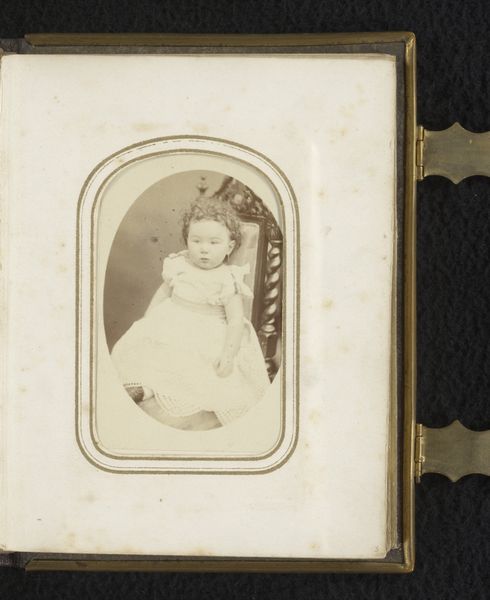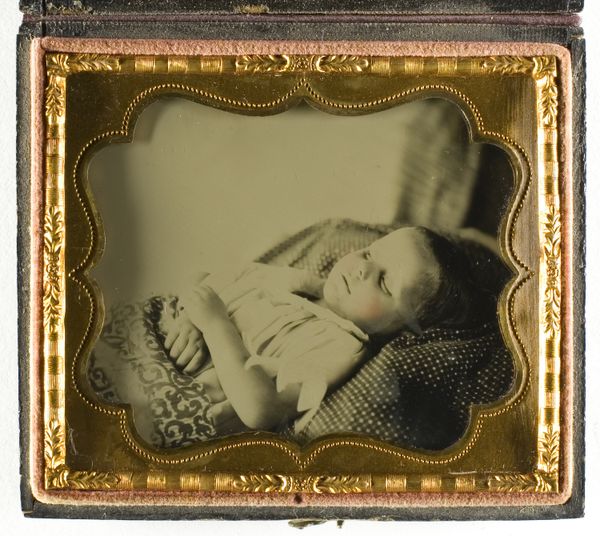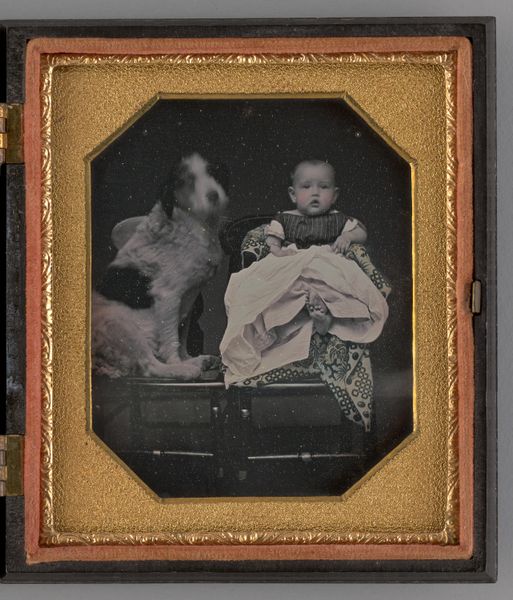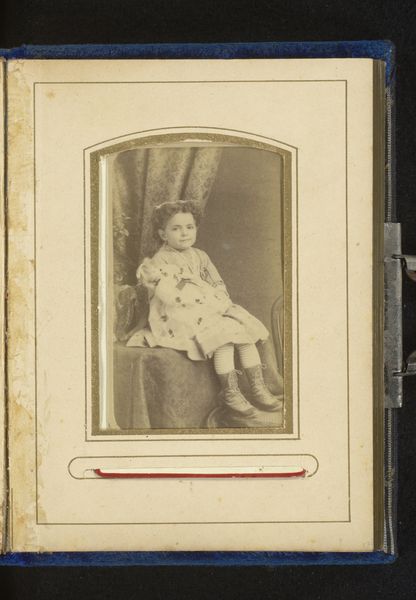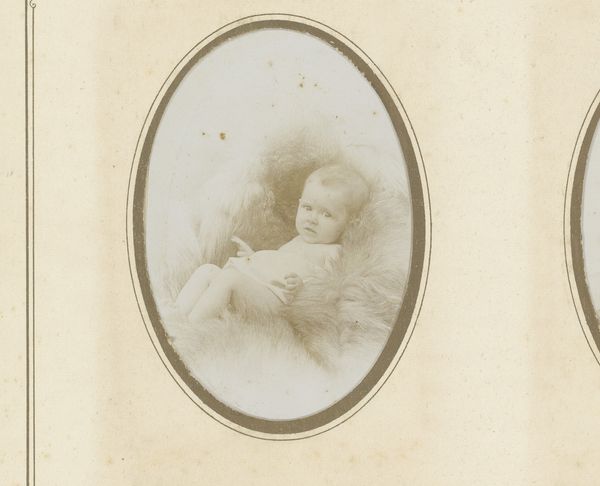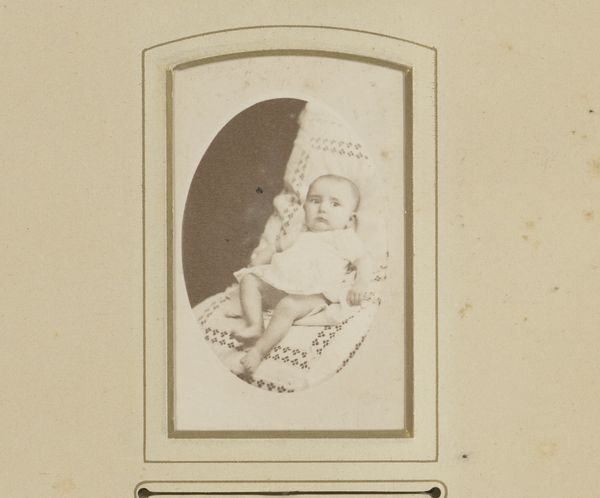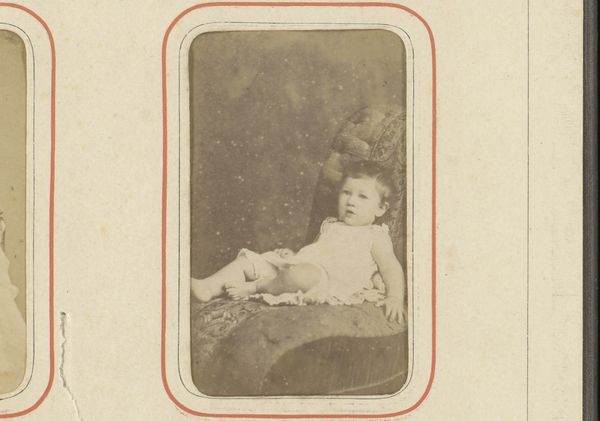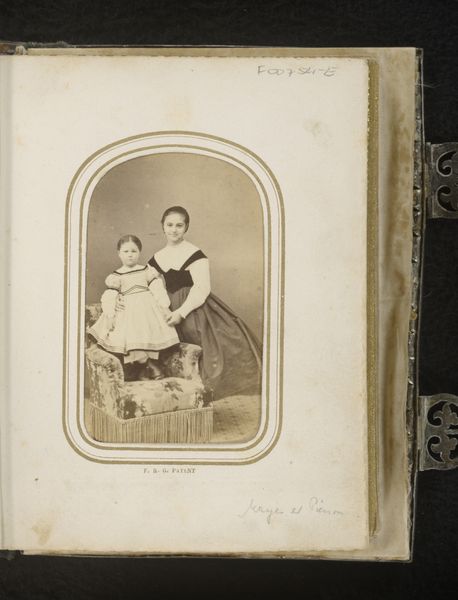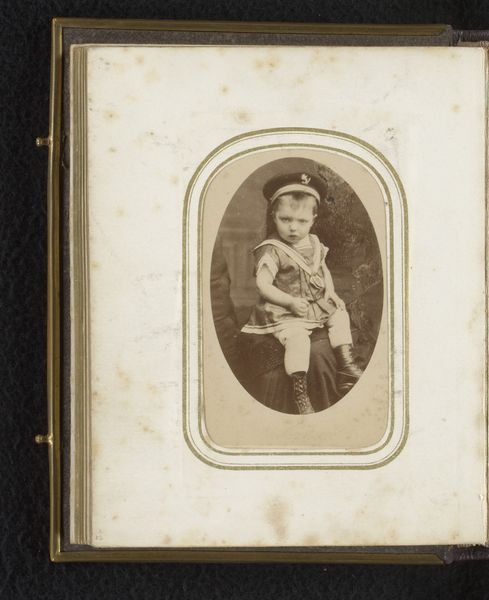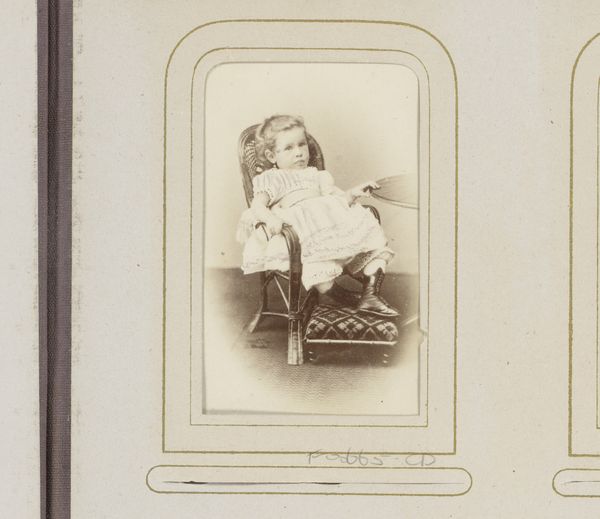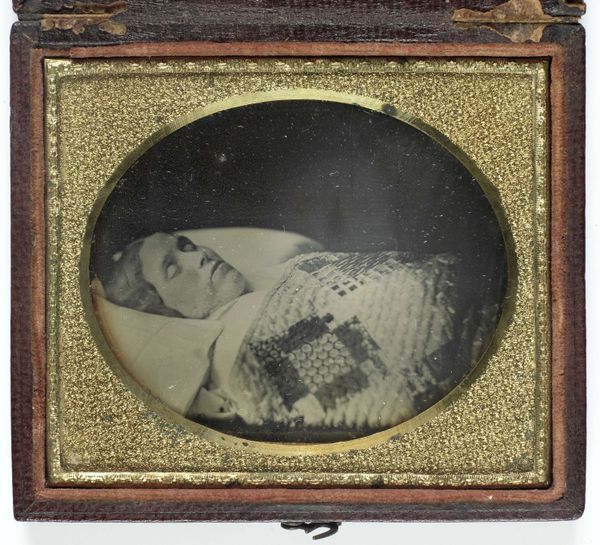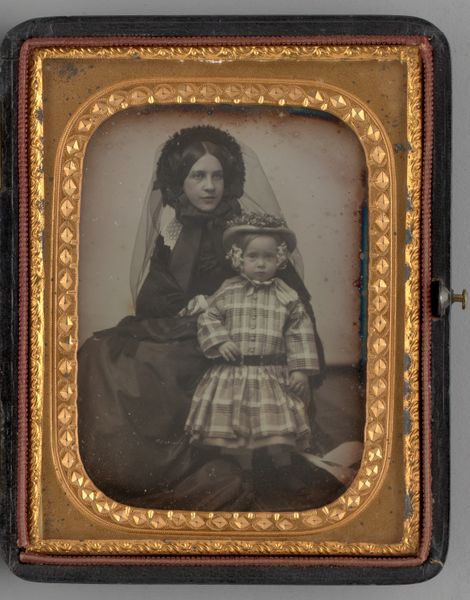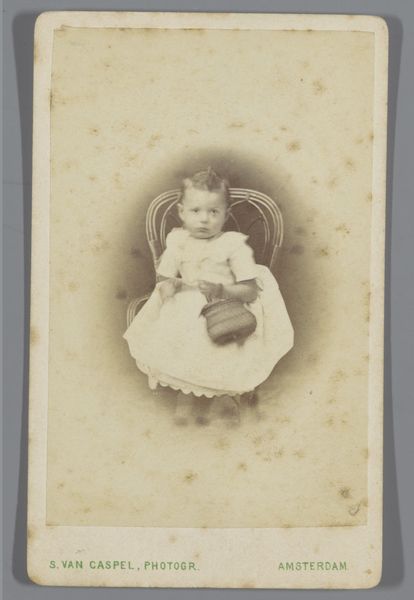
daguerreotype, photography
#
portrait
#
still-life-photography
#
16_19th-century
#
daguerreotype
#
photography
#
child
#
coloured pencil
#
genre-painting
Dimensions: 10.2 × 8.2 cm (plate, appro×.); 8.8 × 6.3 cm (image, sight); 11.9 × 19.3 × .9 cm (open); 11.9 × 9.5 × 1.8 cm (case)
Copyright: Public Domain
This anonymous photograph shows a sleeping baby in a pram. The image, a daguerreotype, was a popular form of photography in the mid-19th century. In an era marked by high infant mortality rates, this portrait takes on a particular significance. The image is carefully framed and presented, suggesting the parents’ socio-economic status and the value they placed on commemorating their child's existence. During this period, photography was becoming increasingly accessible to the middle classes, offering new ways to record family history. The very act of commissioning a portrait reflects societal shifts in attitudes towards childhood and family. Further research into the history of photographic practices, combined with demographic data from the 19th century, helps us understand the cultural and emotional landscape that shaped the creation and reception of this poignant image. Such understanding reminds us that even seemingly simple portraits are artifacts embedded in complex social and institutional contexts.
Comments
No comments
Be the first to comment and join the conversation on the ultimate creative platform.
